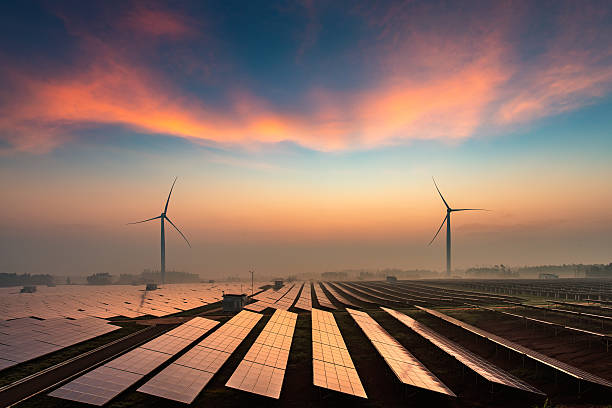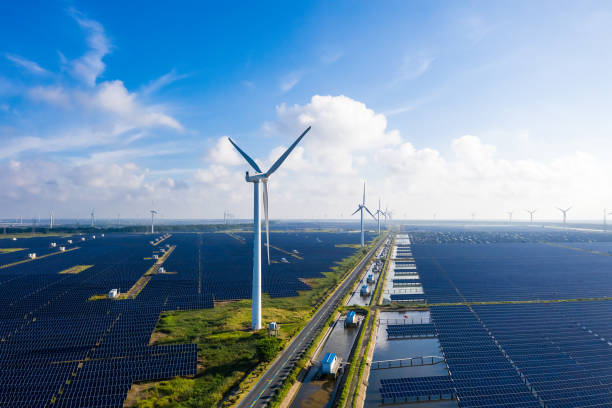Solar energy is the power harnessed directly from the sun’s rays. With the help of solar panels (also known as photovoltaic or PV panels), this abundant natural energy source is converted into electricity or heat, powering everything from calculators to entire cities.
The Shift Towards Sustainability
As the world wakes up to the alarming pace of climate change, there’s a mass pivot towards sustainable living. Solar energy is at the heart of this shift. Why? Because it’s clean, limitless, and doesn’t spit carbon into the sky like fossil fuels.
Importance of Renewable Energy in Combating Climate Change
Renewables like solar and wind energy are crucial weapons in the fight against climate change. They reduce our dependence on coal, gas, and oil, which are the largest sources of CO2 emissions worldwide. Transitioning to renewables is the key to cutting global carbon emissions.

Understanding the Environmental Benefits of Solar Power
How Solar Power Helps Reduce Emissions
Solar energy produces zero emissions during operation. Unlike gas or coal plants, solar panels don’t release carbon dioxide or other pollutants while generating power. This single feature makes solar a climate champion.
Solar Power and Carbon Footprint Reduction
An average home using solar energy can reduce its carbon footprint by over 3,000 pounds of CO2 per year that’s like planting 150 trees annually! It’s one of the most efficient ways individuals can take climate action.
How Does Solar Energy Help the Environment?
Solar reduces air pollution, slows global warming, and helps conserve water (unlike fossil plants that consume millions of gallons). It’s also silent, making it a low-noise, low-stress energy option for urban areas.
The Science Behind Solar Technology
Photovoltaic Panels Explained
Photovoltaic (PV) panels absorb sunlight using semiconductor materials (usually silicon) to generate electricity through the photovoltaic effect. When sunlight hits the panel, it knocks electrons loose, creating an electric current.
How Does Solar Heating Work?
Solar thermal systems capture sunlight to heat water or air for use in homes, buildings, and even industrial processes. It’s a straightforward method that cuts down on gas or electric heating bills.
What is Solar Thermal?
Solar thermal systems use mirrors or lenses to concentrate sunlight, generating high temperatures for electricity or heating. This tech is used in large scale solar farms.
While solar uses sunlight, wind power harnesses the motion of air. Both are clean, renewable, and scalable. Solar’s strength is its silent operation and ease of rooftop use, while wind is powerful in open areas.
Benefits of Wind and Solar Electricity
Together, solar and wind electricity can cover each other’s shortcomings. Wind often blows at night when solar can’t produce. By combining both, we create a 24/7 clean energy system.

Wind & Solar Energy Working Together
Smart grids are now integrating wind & solar energy to provide uninterrupted, sustainable power. This combo reduces reliance on fossil backup systems.
Solar Panel Production and Its Environmental Impact
Carbon Footprint of Solar Panel Manufacturing
Creating panels requires energy and raw materials, but the carbon payback time (how long until a panel “repays” its carbon cost) is typically 1–3 years. After that, it’s emission-free power for decades.
Do Solar Panels Cause Pollution?
Not in use. Only during production and disposal. Modern recycling efforts are making the entire lifecycle cleaner.
Are Solar Panels Bad for the Environment?
Not really. They’re among the cleanest energy solutions available today. With proper disposal and manufacturing processes, their net benefit far outweighs any environmental drawbacks.
Land Use and Solar Panel Installations
Solar Power Per Acre: How Much Can We Generate?
One acre of solar panels can power approximately 150 200 homes annually. That’s a significant return, especially on otherwise unused land.
Trees and Solar Panels: Conflict or Harmony?
While trees can block sunlight, they also cool the environment. Smart placement can balance both plant trees where they won’t cast shade on panels.
Solar Energy for Homes and Businesses
How Many Homes Can One Acre of Solar Power?
Depending on the system and sunlight, an acre can produce up to 500 MWh/year. That’s enough for 150 average U.S. homes.
Solar Technology Advantages for Homeowners
Lower energy bills, increased property value, and energy independence are just a few perks. Plus, federal and state tax incentives make it more affordable than ever.
Solar Panels for Climate Change Adaptation
In disaster-prone areas, solar plus battery storage keeps the lights on even when the grid fails making it a key tool in climate resilience.
Solar Power in the Fight Against CO2 Emissions
How to Reduce CO2 Emissions with Solar
Switching to solar is like taking a gas-powered car off the road or better yet, several of them. Every watt generated from the sun is one less watt from a polluting source.
Solar Power’s Effect on the Environment
It cleans the air, reduces asthma inducing pollutants, cuts greenhouse gases, and conserves water. It’s a powerhouse of eco benefits.
Pounds of CO2 Per Gallon vs Solar Benefits
Burning a gallon of gas releases about 19.6 pounds of CO2. Imagine cutting that with every solar-powered commute!
The Future of Solar and Sustainability
Solar Energy Advantages in a Changing World
Clean, quiet, abundant, and scalable solar is tailored for our planet’s needs. As storage tech improves, its dominance will only grow.
How Solar Power Is Changing the Way We Live
From smart homes to electric cars, solar is powering a revolution in how we produce, use, and think about energy.
Why Sustainability Needs Solar Now More Than Ever
With climate deadlines approaching, there’s no time to waste. Solar is one of the most accessible, immediate solutions to turn the tide.
Conclusion
The path from sunlight to sustainability is clear and paved with solar panels. As a renewable, clean, and increasingly affordable energy source, solar power offers an unmatched opportunity to cut carbon emissions, reduce environmental harm, and move toward a greener future. Whether you’re a homeowner, business, or policy-maker, embracing solar is no longer just a choice it’s a responsibility. Let’s harness the power of the sun to protect our planet, one panel at a time.
Frequently Asked Questions :
1. What are the top environmental benefits of solar energy?
Solar energy reduces greenhouse gas emissions, air and water pollution, and reliance on fossil fuels while promoting energy independence.
2. Do solar panels have a high carbon footprint?
Only during manufacturing. Over their lifespan, solar panels produce far more clean energy than the emissions created during their production.
3. Can solar panels help reduce pollution?
Yes. Solar panels produce no emissions during use, significantly lowering both air and water pollution compared to fossil fuels.
4. Are solar panels effective in all climates?
While performance varies by sunlight availability, solar panels work efficiently in most climates ,even cloudy or cold ones.
5. How does solar compare to other renewable sources?
Solar is versatile and scalable, making it ideal for rooftops and small properties. It pairs well with wind and hydro for balanced renewable systems.
